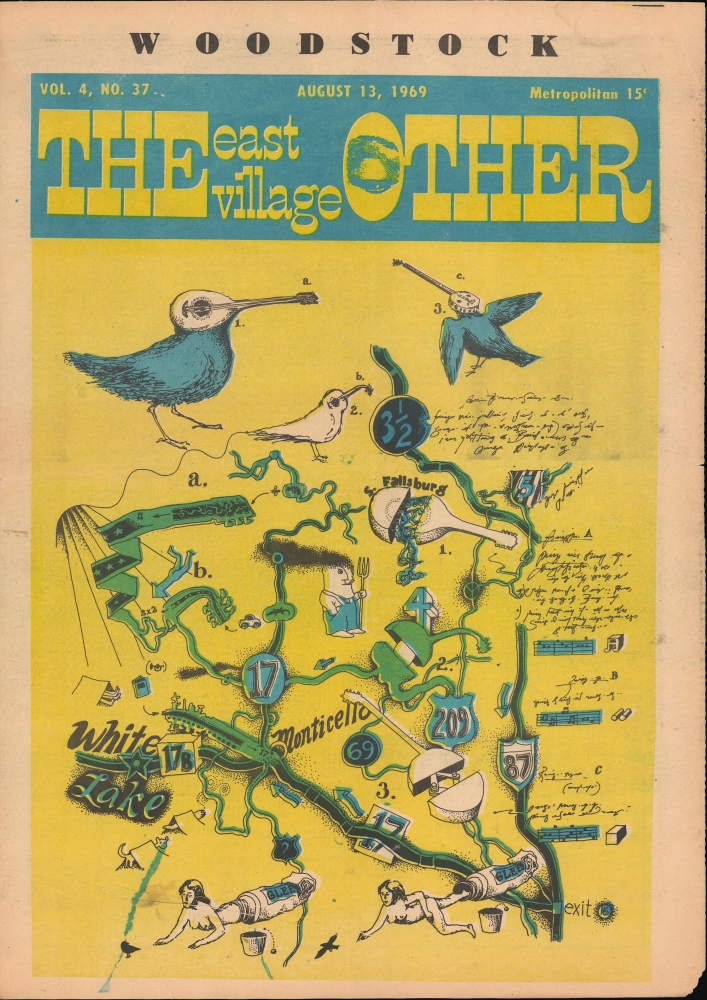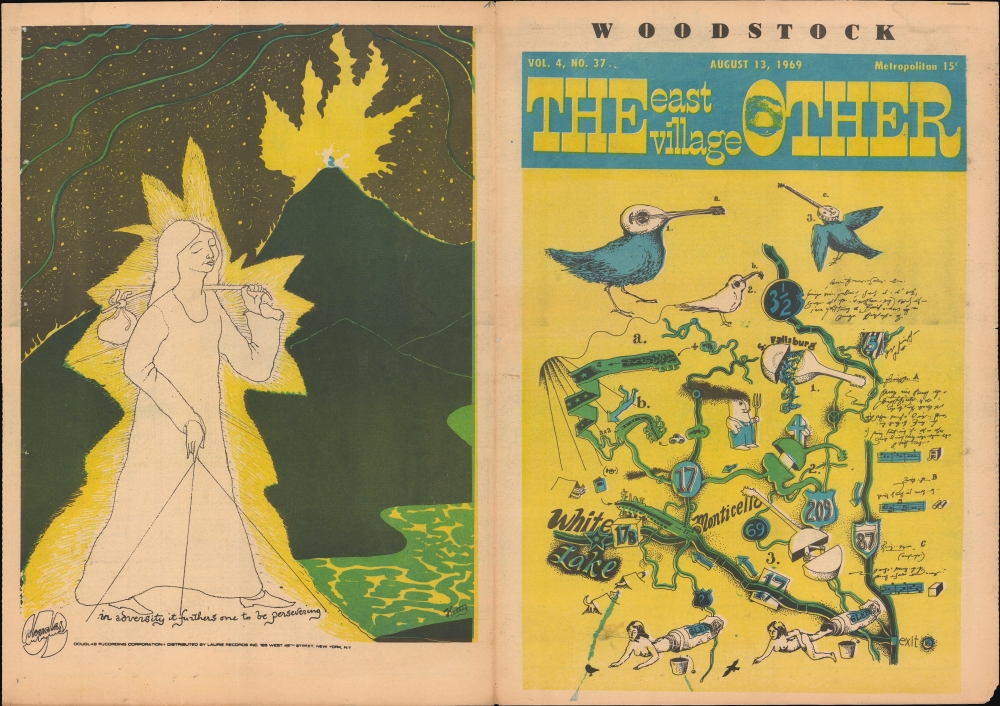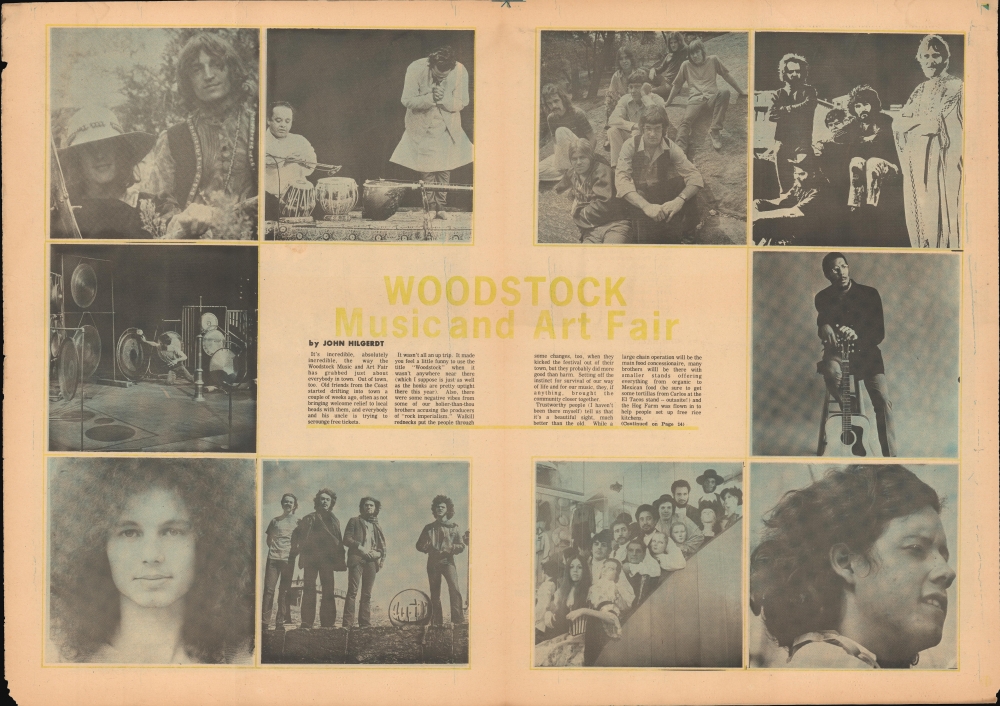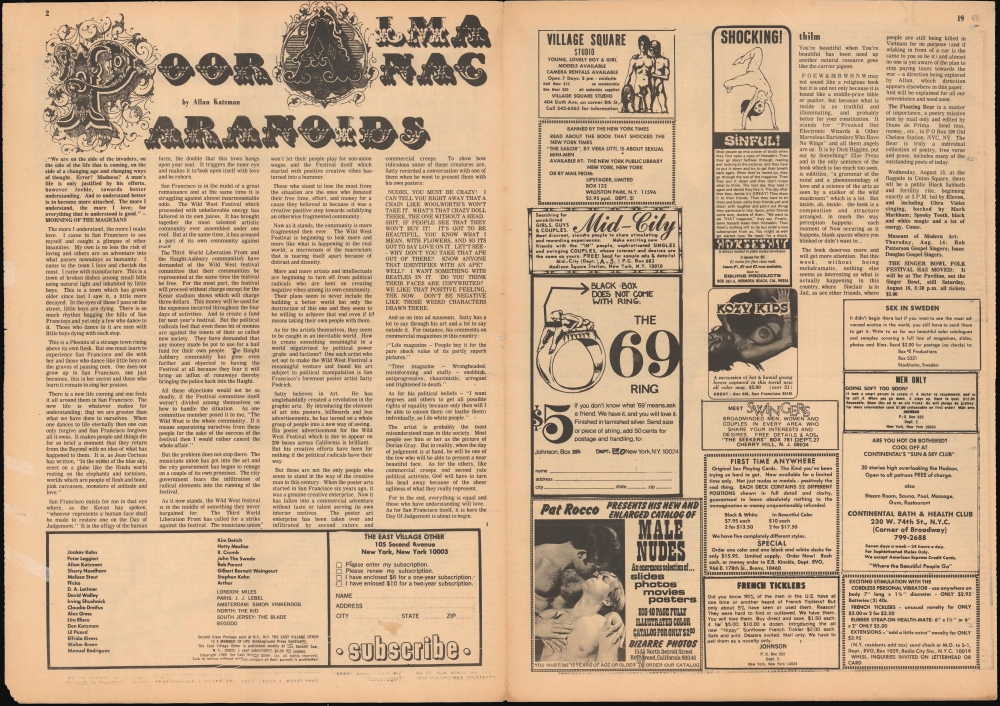This item has been sold, but you can get on the Waitlist to be notified if another example becomes available.
1969 'East Village Other' Magazine with Map to Woodstock Music Festival
Woodstock-eastvillageother-1969$475.00

Title
Woodstock. The East Village Other.
1969 (dated) 16 x 22.75 in (40.64 x 57.785 cm)
1969 (dated) 16 x 22.75 in (40.64 x 57.785 cm)
Description
A remarkable 1969 'yellow submarine' style surrealistic map to the Woodstock Music Festival published as the front page of the counterculture periodical East Village Other, just two days before the epic three-day weekend.
A Closer Look
The map 'kind of' offers directions to the festival, but its practicality is secondary to its illustrative message capturing the psychedelic spirit of the Summer of 69: guitars and banjos morphed into birds, weed-smoking farmers, and naked young women emerging from tubes of 'Glee'. The whole is set against a yellow background in what Rumsey calls the 'yellow submarine' style. Included here is the full newspaper, 20 pages on newsprint, rich with 1960s flavor: anti-establishment, anti-Vietnam, free love, Aquarianism, advertisements for sex clubs ('Fuk: Our flipped out application will blow your mind'), and more. The double-page centerfold features photographs of some of the participating musicians, as well as a short review by John Hilgerdt.East Village Other
The East Village Other (1865 - 1972) was a bi-weekly underground newspaper published by Water Boward that emerged in New York City’s East Village in 1965. In the words of New York Times journalist Margalit Fox, East Village Other was 'a New York newspaper so countercultural that it made The Village Voice look like a church circular.' (Fox, Margalit, 'Walter Bowart, Alternative Journalist, Dies at 68.' New York Times, January 14, 2008.) It emerged as a central voice of the counterculture movement, where it was known for avant-garde content. The publication featured a mix of radical politics, psychedelic art, and coverage of the burgeoning hippie scene, along with contributions from notable figures in the underground press. The newspaper played a role in documenting and shaping the countercultural zeitgeist, covering topics ranging from anti-war protests to the free love movement, and it became a platform for alternative voices that were often ignored by mainstream media. Its eclectic and rebellious spirit captured the ethos of the era, making it a significant cultural artifact of the 1960s.Woodstock: An Aquarian Exposition
The Woodstock Music Festival, held from August 15 to 18, 1969, in Bethel, New York, was a defining moment of the 1960s counterculture and a landmark in the history of music festivals. Originally planned as a commercial venture, Woodstock unexpectedly became a symbol of peace, love, and music when more than 400,000 people gathered on a dairy farm for what was billed as 'An Aquarian Exposition: 3 Days of Peace and Music.' Despite logistical challenges, including overcrowding, rain, and food shortages, the festival featured iconic performances by artists like Jimi Hendrix, Janis Joplin, The Who, and Santana. Woodstock epitomized the spirit of the era, showcasing the power of music as a unifying force and leaving a lasting legacy as a cultural touchstone of the 1960s.Publication History and Census
This is the August 13, 1969 issue of the East Village Other. This issue of the East Village Other was likely its most popular and influential, so much so that it was reissued as a 'National Edition' with only minor tweaks on August 20, three days after the festival (cf. Mode, Persuasive Maps, #1379.01). The artist who drew the map is unknown. We note an example at the P. J. Mode Collection of Persuasive Cartography, the Osher Map Library, and the David Rumsey Collection.Condition
Good. Edge wear. The newspaper is a full 20 pages on newsprint.
References
Rumsey 11633.000.








